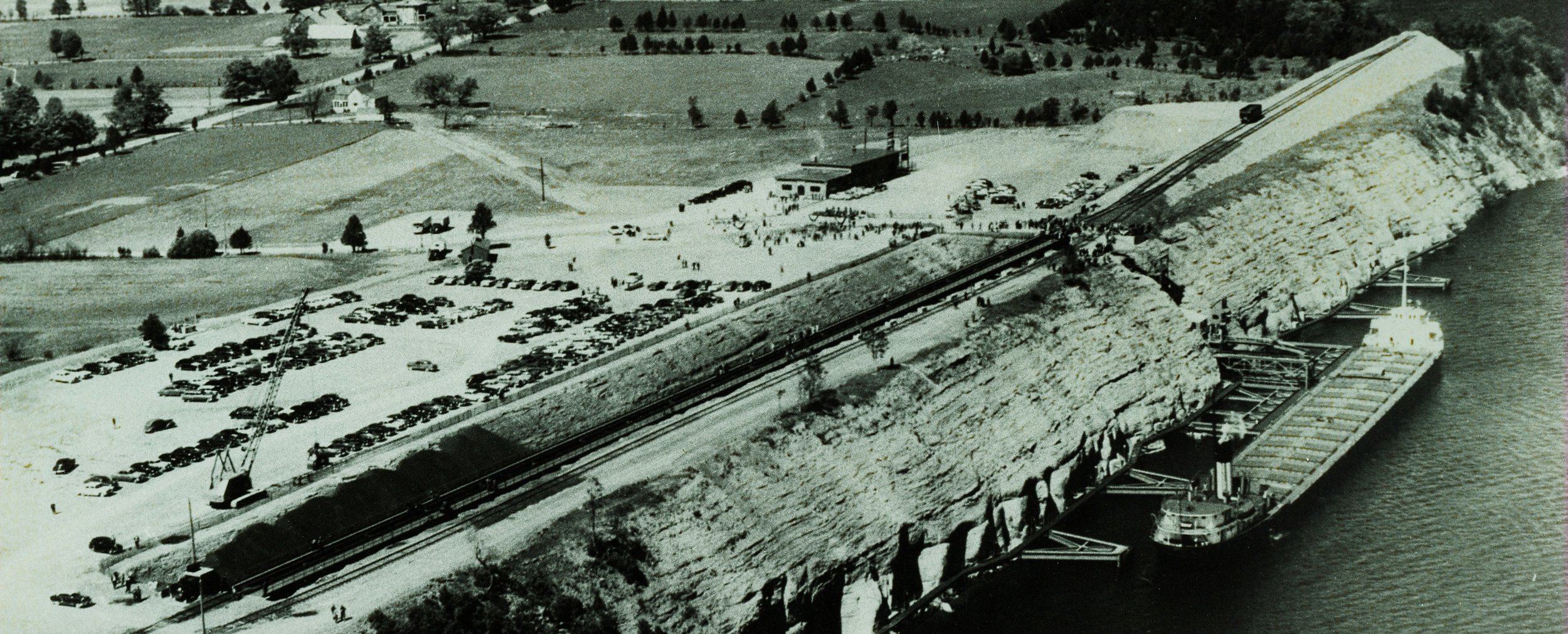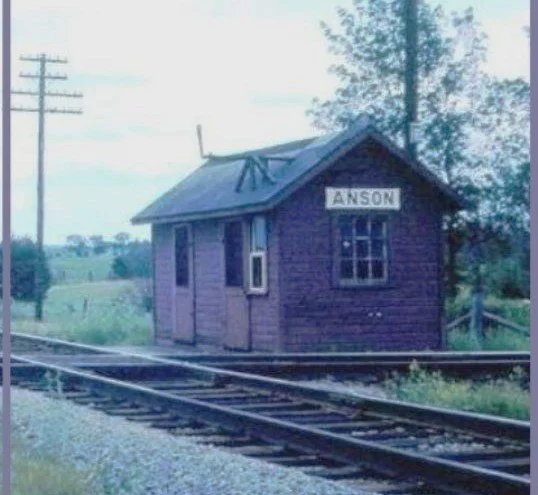(Wikipedia) When manufacturing operations shut down in 1961, nearly 100 years of hazardous by-products and residues were left behind on the Deloro Mine Site. These included a "complex blend of toxic compounds; metals like cobalt, copper, nickel; and low-level radioactive wastes". The high levels of arsenic on the site is the main concern. The low-level radioactive slag and tailings produced during the re-refining of by-products from uranium refining has also had an impact. The operations at the Deloro Mine Site caused significant environmental impact including the contamination of soil, sediment, surface and ground water.
TORONTO GLOBE & MAIL SEPT 22, 1980
".........The Ministry has dried up the river bed in order to discover the source of about 60 per cent of the arsenic still finding its way into the river. It's a race against the weather. This is the watershed's dry season and two dams (a conservation dam and a makeshift one) are holding back the river, while ministry officials pray for sunshine while they test water samples.
The ministry has set a limit of .05 parts million in the river as an objective, but after years of battling the pollution, the fluctuating readings of arsenic in dry summers are still six to 10 times that target, Mr. Owen said. The ministry took over environmental management of the site last year after the owners, Erickson Construction Co., said they lacked the necessary capital to meet the arsenic collection and treatment objectives set by Ministry. Jack Pruner, district manager of the ministry's industrial abatement section, said senior ministry officials are now studying a consultant's report which outlines several means of dealing with the problem and the costs involved. A decision is expected before the end of the year as to what to do with the site. The province faces what boils down to a pay-now-or-pay-later alternative. The options range from a massive multi-million dollar clean-up attempt that would turn it into a worry-free site, to finding all the leaks and upgrading the, collection and treatment. system. The latter would cost several hundred thousand dollars. Such a system, however, would be needed for years to come in order to keep downstream I levels at the Ministry's objective and it would cost at least $100,000 annually to operate ."
LEGACY OF NEGLECT
By MIKE BLANCHFIELD Deloro, Ont.
BARRY GALLOWAY DOESN’T THINK the neighbours did it on purpose. They were just scared, dealing with something nobody was really used to hearing about back then. Sitting at his mother’s kitchen table two decades later, Mr. Galloway, a married 40-year-old father of two, hauls on his cigarette. “I don’t think anybody did it to be vindictive,” he says. “They were ignorant.”
Read the full 1998 Ottawa Citizen article (Note: The reference to the Richardson farm being the start of Deloro is incorrect. The Richardson farm was the site of the first gold in Eldorado - Madoc Township.)
May 26, 2011 Inside Belleville
Deloro Mine Site cleanup has workers on site six days a week
Judy Backus, Stirling EMC
Doug Lynch, a longtime resident of Deloro and a member of the Deloro Mine Site Cleanup Public Liaison Committee since its inception in 1996, has a look at the descriptive sign boards installed at the mine site lookout located at the end of Private Road.
Capturing the Arsenic
Cost of clean-up? Unknown
In 1998 the Ministry of the Environment began in Environment Health Risk Study for the village of Deloro. In the spring of 1998 a very detailed soil survey was taken involving 145 homes, and in the fall of 1998 the study measured the arsenic levels in the urine of Deloro residents. The soil samples showed higher arsenic, cobalt and lead amounts than the MOE's soil guideline values. Other contaminants; barium, copper, nickel, silver, strontium, uranium and zinc were all below. Radionuclides in the soil were also typical for Ontario. Urine tests showed no meaningful difference between those of the comparison samples taken from Havelock residents.
Seven gardens in Deloro gave soil and vegetables from their gardens. While the soil samples tended to be higher than those typically found in Ontario, the vegetables did not contain elevated contaminants.
Each home in Deloro, as well as the library, pump house and youth centre had swipe samples taken of interior surface dust. Levels of metals and radiological contaminants were not significantly different than those outside the study area. Fifty-seven homes were also test for radon gas at this time. Ten of them were found to have higher than the provincial guidelines for radon. All 10 of these homes had successful measures taken to prevent radon gases. These ranged from installing vacuum systems to simply replacing dirt basement floors with concrete ones.
The village of Deloro was tested for gamma radiation. Three locations were found to have elevated levels within the village, which were still below provincial requirements. All three of these areas were dug up and replaced with fresh dirt. The contaminated dirt was moved on the Deloro Mine Site.
Throughout all of the studies and tests done on the Village of Deloro and the Deloro Mine Site it has been made clear that it is safe to live, grow vegetables and drink the water in Village of Deloro. It has also been made very clear the Deloro Mine Site is heavily contaminated and is not safe.
Click here to see the Deloro Ruins photo gallery
Click here for The Fact Sheet - Ontario Ministry of Environment
The Law Suits
A report of the National Orphaned/Abandoned Mines Initiative (NOAMI)
Deloro, Ontario:
A succession of mining, smelting, chemical and pesticide production, over a period of 100 years, has left the area around Deloro (and downstream) contaminated with metals, radioactive materials, PCBs, bulk fuel and chemicals. The Care Delivery Network Project asserts that cancer rates and birth abnormalities in the area are high in Hastings County. In 1979, the site was abandoned following a cleanup order from Ontario Ministry of Energy and Environment (MOEE), leaving MOEE as the manager of the site.
There have been four court cases related to the site. In one, a community member wascompensated for the death of her husband (lung cancer); in the second, a Class action suit was initiated for $55 million in damages against MOEE, MNDM, Ministry of Health, Attorney General of Canada, Canada Eldorado Inc., Atomic Energy Control Board, BOC Canada Ltd. (ongoing); and in the third, a charge was made against the Ontario government for allowing damage to fish habitat.
This case ended in 2001,and MOEE was found to have demonstrated due diligence during the time frame of the charges. Following this decision, the fourth case, which charged the Ontario government for "unlawfully discharging/permitting the discharge of a contaminant (radon) into the natural environment" was withdrawn since the problem predated MOEE involvement.
Public pressure has been exerted to have the site cleaned up; to receive compensation for damages to health and property value; and to have a more transparent process for community involvement in decisions made about remediation of Deloro. In 1997, a Public Liaison Committee was established by MOEE (in conjunction with two government technical committees), with MOEE staff serving as the committee chair.
This structure has been perceived as a conflict of interest, as MOEE is also responsible for the site remediation. Health studies and environmental monitoring studies have been met with controversy, as well.
Excerpt from Canadian Mining Journal Feb. 1, 2015
From 2011 to 2013, the ministry contracted Golder Associates Ltd. to perform the more specific tasks of the Tailings Area Clean-up and Phase 2 of the Industrial and Mine Area Clean-up.
Golder, while working as General Contractor for the MOECC, also self-performed the required QA/QC for the civil remediation works, radiation monitoring, water sampling and analysis and air quality monitoring required during the operations. For more than three years, Golder concentrated on securing the site contamination by building a groundwater collection system and upstream surface water flow diversions to meet the project’s objective of limiting infiltration to less than 10 per cent of annual precipitation and thereby reducing the discharge to neighbouring waterways.
At the large tailings area on the east side of the former mine site, Golder installed over 26 hectares of geosynthetics, 300,000 tonnes of fill material and planted more than 10,000 poplar trees to complete the capping of the area and restore it to a natural condition.
The new Deloro mountain 2017
Its work continued in the Industrial Mining Area (IMA) located to the west of the Moira River. Heavily contaminated wastes were placed within the site’s waste consolidation area (WCA), with final design planned to include a cap of engineered geotextile, geosynthetic clay liner, layers of clay fill, sand and re-vegetation of the area.
Golder Associates Construction Contracts Manager, Brian Daniels, says the $21M cleanup projects posed several challenges, specifically with workers and exposure to low-level radiation. “We developed and executed an extremely intricate Radiation Protection Plan for workers at the Deloro project,” says Daniels, “resulting in 100% compliance with the Canadian Nuclear Safety Commission, the Ministry of the Environment regulations and most importantly, resulting in a safe working environment for our people over our years at Deloro.”
In 2013-14, work continued on the consolidation of waste into the Industrial and Mine Area WCA. In addition, the Ministry successfully commenced cleanup operations in Young’s Creek in preparation for a large scale dredging project focusing on removing impacted sediment from the creek bed.
The project is expected to be completed by 2017.


































